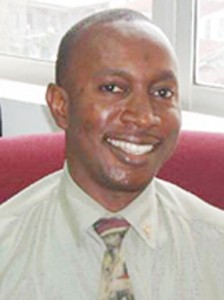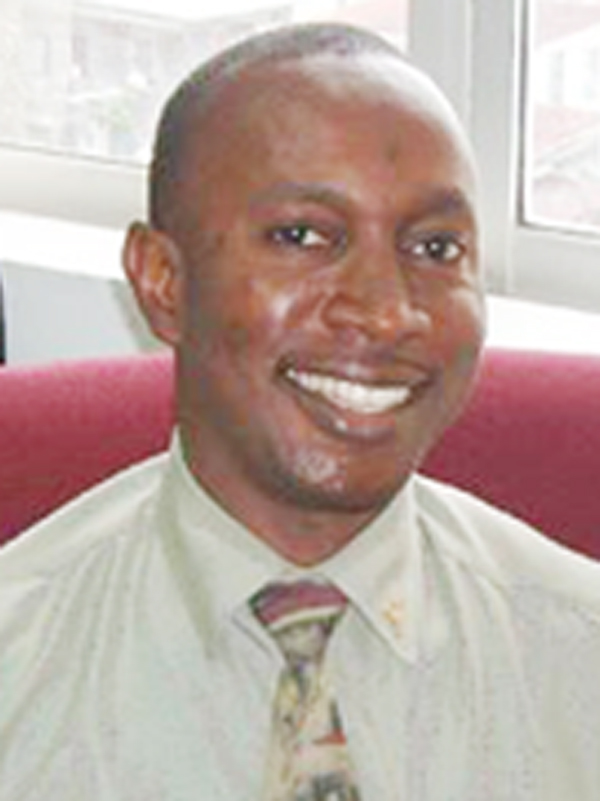By the end of this month the new reference laboratory handed over to the Guyana Government recently, is expected to open its doors and some of its important functions would be testing for the HIV virus in infants under 18 months and research and surveillance, according to its Director, Dr Colin Roach.

Because it is the country’s first reference laboratory Dr Roach, who is a medical doctor and a laboratory scientist, said it is hoped that it would be involved in doing a lot of research so that there would be more publications coming out of the country “rather than people coming and telling us what we have.”
It is expected that by August month-end the lab would be 50% operational. However, it would take about another year for everything on the agenda to be implemented since the general equipment procurement is at tender board going though the evaluation process.
The US$4.4 million public health laboratory was commissioned on July 3, with the expectation that it will be a national and regional centre of excellence for lab standards and research.
Named the National Public Health Institute and created with major funding from the PEPFAR (US President’s Emergency Plan for AIDS Relief) project and inputs from the World Bank and the Clinton Foundation, the facility is said to be poised to “respond swiftly to any public health threat in the country.”
In an interview with Stabroek News, Dr Roach said that while PEPFAR would continue to provide funding for the lab in terms of the purchasing of equipment, the facility would be fully under the control of the Ministry of Health. He said that the lab would eventually be performing a number of functions but initially it would be focusing on the simple things “that we can master and phase in the other things.”
DNA testing
Tests would be conducted on the tests done for HIV, monitoring of the viral load in HIV-infected persons and testing for the Hepatitis B and C virus. However, the latter two tests would be phased in eventually. All the listed tests are forms of DNA tests, Dr Roach stated.
But Dr Roach explained that while the lab has the capacity for DNA testing, it would not be in the sense of paternity testing but rather in terms of checking for the HIV virus and any micro-bacteria, both of which are new to Guyana.
He said that in the DNA tests they would be utilising the pulmonary strain reaction technique which involves checking for the HIV virus in infants under the age of 18 months.
Dr Roach said that because babies carry their mother’s antibodies up to 18 months locally they are unable to determine whether the child is HIV-infected until they would have passed that age. “But what DNA does is that it checks for the actual virus and so it is able to diagnose the child much earlier than the eighteen months.”
The test can be done as early as six weeks with a follow-up test later. The DNA tests would also be used to check viral load of HIV-infected persons so as to monitor them on how they are responding to the drug therapy. “The DNA equipment would also have a platform for hepatitis B and hepatitis C viruses.”
According to Dr Roach the same technology can also be used to test for the human papillomavirus (HPV), which is a sexually transmitted virus. “But that (test for HPV) is something still in discussion… But the equipment that we are buying has a platform for that but we would have to look at the cost factor…” Because the monitoring of viral load is already done at the Georgetown Public Hospital, Dr Roach said that the suite would be transferred to the new lab along with the quality assurance suite which exists at the Ministry of Health.
Eventually the laboratory would also conduct micro-biology and tests for tuberculosis and drug sensitivity, the testing of persons who may be developing resistance to drugs.
And because the lab is funded by PEPFAR, Dr Roach said, they have a responsibility to ensure that there is proper HIV monitoring and diagnosis. “We would continue to do all the chemistries for the HIV population, we would continue to do all the haematology for all the persons in that population and in that programme,” he said.
Further the lab is expected to be outfitted with a Sexually Transmitted Infec-tions (STIs) Immunology Department which would not only be doing tests for STIs but also dengue and leptospirosis
Human resources
It is expected that the laboratory would have the capacity to make emergency response to disease outbreaks such as diarrhoea, dengue, and leptospirosis.
According to Dr Roach, surveillance would also be a major role of the lab’s function so if there is any outbreak they would be ready to respond adequately.
He said that should there be a situation where the laboratory cannot do a test immediately, because of its close relationship with the US Centers for Disease Control (CDC) they can quickly turn to them for assistance.
It has been recognised that the lab does not have the necessary human resources and as a result PEPFAR has hired the American Society of Clinical Pathology, a recognised scientific body, to train local employees in certain areas.
Dr Roach himself will be doing an internship at one of the labs in the US to understudy the director of that laboratory. “A lot of training will be happening to ensure that we can accomplish everything.” They are also working on acquiring regional as well as international accreditation with the US-CDC continuously overseeing operations.
He hopes that in another two years they will “get where we want to be” while acknowledging that it requires both human and infrastructural services.
Part of the lab’s functions is to oversee all the other laboratories in the country and monitor how they perform and this would be done in the quality assurance suite. “We would monitor ourselves in-house and also the other labs and we would be part of an international proficiency testing body. So we would ourselves be monitored by an international body,” Dr Roach said.
A training lab would also be established in-house and it would be responsible for the training of University of Guyana students before they enter the real world of work. Initially about 20 persons would be employed but as the lab evolves the staff number would be increased.
Importantly, Dr Roach said, what needs to be defined is what would be the relationship between the new forensic lab that is on the horizon, the Food & Drug Department and the new reference lab. The doctor said that the Environmental Protection Agency (EPA) would also have to be factored in.
He said that the EPA would look at mercury and lead while the lab would have an environmental department that would also be testing for such things, “but probably for a different reason.”
“There is a lot of overlapping things and one of the things that we would have to do is to have clear definition as to when it is that the reference public health lab is needed, [and when it is that the other agencies are needed] so that would be a continuous discussion… to come up with who does what when.”
No walk-ins
And access to the ordinary person will be restricted, Dr Roach has said.
“Access to the man-in-the-street would be restricted for the mere fact that it is a reference laboratory so we don’t want people to be running in and out. The complexity of the tests and the complexity of the facility would require that the man-in-the-street not to have direct access to the facility. However, should the man-in-the-street have a concern he would be referred through one of the peripheral laboratories to the reference lab. So if there is something he needs to have tested they would take the sample and so we would have communication with them. So you can’t walk into the lab and say you want to have a test, it is highly secured,” Dr Roach said.

